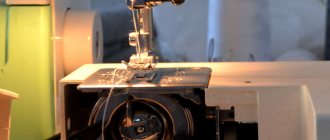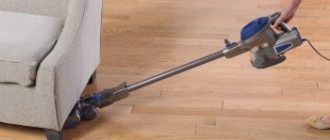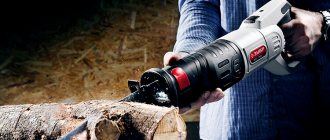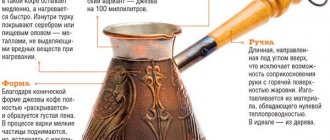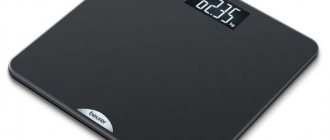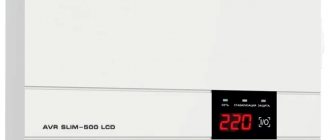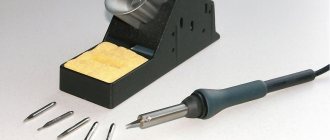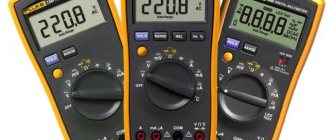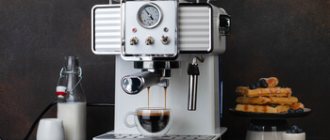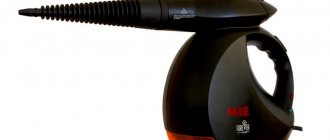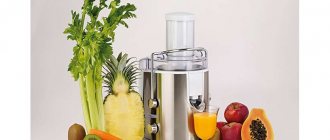Tip 1: Determine your needs
I can say with confidence that a novice seamstress may need an overlocker in three cases.
- The first is when you start sewing to order. If you want to be paid for your work, you need to sew an item for customers with processing “like in a store.” So that you won’t be ashamed to take money and feel like a master.
- The second is if you are not sewing to order, but sewing for your family or just yourself, but the inside of the product is important to you. Of course, it all depends on the person. There are those who know that the reverse side of a thing is sewn in a “bad mistake”, but no one else knows or sees this, and they feel great in these clothes. But there are people, perfectionists down to the tips of their nails, who want the inside of their item to have a couture finish, although it is basically invisible to anyone. If you belong to the second category, then immediately buy an overlocker in addition to your sewing machine.
- The third case is when the bulk of the clothes you make are made from knitwear or stretch fabrics. For example, swimsuits, hoodies, sweatshirts, sweatshirts, tracksuits and others. You can’t do without an overlocker and special stitches that only this professional equipment can do. And my advice is, for this option, buy a carpet locker - it combines the functions of an overlocker and, in addition, makes many other useful seams necessary when sewing T-shirts or underwear.
Tip 2. What is the difference between an overlocker and a sewing machine?
An overlocker makes overcasting stitches of different widths and densities. Coverlock also makes overlock stitches, flat seams and other types of knitted stitches. There is a myth that a sewing machine can combine the function of an overlocker, and they may even tell you about this in the store. But that's not true. The sewing machine imitates an overlock stitch, and after washing, the edges processed in this way may fray.
The overlocker is equipped with a special knife, which, when sewing, trims the edge of the fabric, making it smooth and free of unnecessary lint. You will immediately notice the difference between finishing the edge with a zigzag stitch on a sewing machine and overlock stitching. She looks more neat and professional.
Important (!) An overlocker cannot replace your sewing machine, since only it makes straight stitches. But if you sew products only from knitwear, you can buy yourself only a carpet lock and you will not need other sewing equipment, because a carpet lock is capable of not only processing edges but also sewing fabrics together.
Features of work
It is incorrect to ask the question about what an overlock is in a sewing machine. She creates an imitation using a simple zigzag stitch. When tensioned, the threads may break. The result is poor quality processing. This is the main reason to purchase a machining machine. But if this is not possible, it is recommended to know the features of working on a machine with such a stitch.
You might be interested in the main differences between pleated and corrugated: making it yourself
A novice seamstress should know that it is worth processing the edges of products using a foot for these purposes. Each type of stitch is suitable for different purposes. For bed linen, for example, oblique imitation should be used.
Sewing machine with overlock stitch
Tip 3. What is the difference between a household overlocker and an industrial overlocker?
Household overlockers for the home are designed for sewing with a light load, that is, its productivity can be 2 - 3 hours during the day. An industrial overlocker is designed for heavy workload and you can sew on it for 8-12 hours a day. At the same time, it will not overheat, because the power of its engine is designed for such a volume of work.
Also, an industrial overlocker sews almost 10 times faster than a household overlocker, but at the same time it can only perform one type of stitch. While the household one is reconfigurable and is capable of making up to 12 different stitches.
Industrial overlockers usually come with a table, because machine stability is important here. Also, the body of such models is made of steel, and not of plastic like household overlockers. Of course, due to this configuration, industrial equipment costs several times more than household equipment. Ask yourself how many things per day you will sew. If you do not plan to sew clothes in batches, then of course buy a household overlocker for the home, which is well suited for such tasks.
What to look for when choosing an overlocker for your home?
Before purchasing, think about how useful this or that function will be in your work. Some options increase the cost of equipment, but are practically not used at home.
- Converter. In some models it is already pre-installed on the upper looper. Its main tasks are making 2-thread seams on the lightest materials, decorative overcasting, careful stitching of elastic fabrics, simultaneous stitching and overcasting. It will come in handy if you often sew items from chiffon, silk, or stretch materials. You can buy it separately.
- Thread tension adjuster. Using the device located on the front cover is not very convenient. This option is typical for cheap models. It is much more comfortable to work on an overlocker equipped with tensioners that are located on the same axis. They ensure uniform load and reduce the risk of thread breakage.
- Differential conveyor. An important device that prevents knitwear from stretching and silk and viscose from moving when sewing. Allows for uniform gathering when finishing with braid, edging sleeves and collars.
- Color marking of thread guides. It has virtually no effect on the price of the overlocker, but seamstresses really like it because it prevents them from getting tangled in several threads.
- Automatic threading of the lower looper. Another useful feature for comfortable work. With it, preparing an overlocker takes much less time.
- Display. Seriously increases the cost of the equipment, but makes it possible to quickly select the desired mode and type of stitch, enable or disable the option, and monitor the execution of the operation
- Thread cutter. In the cheapest overlockers, it is a regular blade built into the platform. There are models with upper and lower thread cutters. Automatic devices cut threads at the touch of a button.
When choosing an overlocker for your home, first decide on your budget, study the functionality of the models that suit your price, and make a list of the must-have functions. This sorting will help you make the right decision.
Tip 4. What types of overlockers are there? Kinds
Overlockers are not only household and industrial, but are divided into types according to the number of threads being threaded. Of course, I will talk about household overlockers, because they are most suitable for home use.
- Double thread. This is the simplest type of overlock of all. Despite the fact that it is the cheapest, I do not recommend buying it, since the stitches will not be as dense and of high quality. It is better to choose an overlocker with three threads or more.
- Three-strand. This is the most versatile type of overlock. I myself use a three-thread stitch in my work to overcast the edge of the product. The seam is dense, high quality and does not unravel after washing. This overlocker is also capable of making a roller seam and a stretch stitch for sewing knitwear.
- Four-thread. A four-thread overlocker can reinforce the seam that a three-thread overlocker makes. It can be used to make a double front seam, and is also capable of simultaneously overcasting the edge and joining the parts. It is used in sewing swimsuits, workwear and bags.
- Five-thread. This type of overlocker performs the widest range of work. With it there is scope for creativity, because it is capable of not only overcasting and stitching, but also embroidery and many other functions. If you plan to use not only overlock seams in your work, then immediately take this model.
There is no point in talking further about the types of overlockers with up to 8 threads, since they are already intended for industrial use.
Types of overlockers
The number of working threads is the main difference between overlockers. Modern devices create an overcast of 2-10 threads. Three-thread overlockers are most widely used.
Overlock seams
There are 7 types of basic overlock stitches:
- 4-thread overcasting
- 3-thread narrow
- 3 thread wide
- 3-thread overcasting wide
- 3-thread overlock narrow
- 3-thread border
- 3-thread rolled hem
Additional seams
When using an overlocker for knitwear, choose models with a converter. A small device is installed on the upper looper and helps to create different types of two-thread seams:
- 2-thread narrow overcasting
- 2-thread rolled hem
- 2-thread flat stitch
- 2-needle 3-thread overcast
Overlockers with a chain stitch looper boast the ability to sew with a two- or three-needle stitch on the front side while simultaneously processing a multi-thread edge on the back.
Top-covered seams can be performed by the most advanced models. The number of working threads involved in the formation of such a decorative flat seam reaches ten.
Tip 5. How to thread an overlocker
At first glance, a beginner may think that the overlocker device is too complicated and it will be difficult to change threads.
But in fact, when you rethread the overlocker several times, the next times you will do it with your eyes closed. There are also two ways to get rid of the painful rethreading of threads:
- Buy an overlocker model with automatic threading function. It will cost you a little more, but it will save time.
- Seamstresses who sew have long been using one useful life hack, which I will share with you today. In order not to pass the new thread through all the thread guides, you need to cut off the old thread at the very base of the spool, and only then remove it. Then put on a new spool and tie both threads together. And now you can pull the threaded thread through the needle, and it will pull a new thread with it. All that remains is to cut off the thread with the knot and thread a new thread into the eye of the needle.
Tip 6. Which companies to choose
- Janome.
The best choice for a beginner in sewing. Easy to set up and work based on feedback from customers and my students. - Juki
. Overlockers from this company work the quietest of all, if this factor is important to you, as well as smooth running, then choose overlockers from Juka. - Brother.
Here you can get a high-quality model, or you can buy a capricious machine that will require constant tuning. - Merrylock
is the best ratio in terms of price and capabilities. This machine has many functions, stitches and at the same time it is inexpensive. I myself use a carpet locker from this company and have no complaints about it. - Astralux
. It’s also not a bad model from the budget segment, but its small minus is vibration. Which can be easily removed using a special mat for a sewing machine.
Tip 7. Which sewing operations are really needed for work?
- Automatic thread tension. For those who are not ready to reconfigure the overlocker to the desired thread tension every time, you can purchase a model where such settings are set automatically - these are usually computer-controlled overlockers. From my own experience, I can say that I have a machine with manual settings and this does not add problems to my work. Included with any overlocker there are instructions that show how to thread any type of seam, as well as what settings to set on the regulators.
- Roller seam. This is a seam that can be used to finish the edges of scarves or flounces on dresses or blouses. Personally, I use it at work often; you can even hem the bottom of a skirt with a roller seam. It looks very nice and neat.
- Stitch width. This is the overlock pitch regulator. It is needed for work when you need to make a tight seam, or, on the contrary, dilute it.
- Differential conveyor. This feature allows you to create wavy edges on fabric. When you need to make the hem of a skirt or the bottom of a sleeve look like waves, this function will come to the rescue. It also works in the opposite direction - it can form neat gathers along the edge.
- Switchable knife. The knife is very useful in work - it will remove the flapping edge, but sometimes you need to turn it off. For example, when sewing cuffs on pants.
- Presser foot pressure and the ability to work with different types of fabrics. A very useful function not only in an overlocker, but also in a sewing machine. It will give you the opportunity to sew heavy, thick fabrics. Even such simple things as sweatshirts and sweatshirts are made from thick fabrics. Therefore, be sure to look for an overlocker complete with this function.
- Compartment for garbage collection. Almost all overlocker models now have this useful gadget. But still, check to see if it is in stock, because without it, your workplace will quickly turn into a trash heap.
What stitches does an overlocker make that are needed for work?
All these types of stitches presented below are most often used when sewing clothes. You may never need some functions in an overlocker, but these five types of stitches should definitely be available.
1. Double thread chain stitch. A single-needle, two-thread stitch, which is often used decoratively, can also be used to sew parts of knitted or stretch fabrics.
2. Three-thread overlock stitch, which is why many people buy an overlock stitch. The most common type of overlock stitch found in processing open cuts.
3. Wide and narrow flat seam, Flatlock. Indispensable for sewing T-shirts, T-shirts, sweatshirts and other knitwear items. It can be of two options, depending on how your overlocker will perform it. My Merrylock makes a flat seam, as in the first version, I know that some models of machines from Janome make it like in the second sample.
4. Four-thread reinforcement stitch. It is a combination of chain elastic stitch and overlock stitch.
3. Three-thread rolled hem stitch. Or in sewing language - the roller stitch, which I mentioned above.
Rating of the best overlock manufacturers
When choosing an overlocker for use at home, you should think about which brand of device is best to buy. The sewing equipment market offers models in several price ranges.
Budget or “amateur”
Overlockers are suitable for home sewing, but the quality of the stitches is not the best. There are several brands worth noting in this segment:
| Aurora 600D The machine has an adjustable overlock foot, a sleeve platform and a fabric conveyor. Pros:
Despite its compactness and the ability to process sleeves, the technique has disadvantages:
| |
| Merrylock 005 It can process wool, elastic fabrics, and knitwear. The seams come out even. The advantages of overlocking include:
The disadvantages of the model include:
| |
| Jaguar T 77DW Convenient and practical 4-thread overlocker, designed for non-professional craftswomen. Among the advantages of the model:
Among the disadvantages of the technology:
|
Middle price segment
Semi-professional machines are used in small studios and at home. Users are attracted by reliable operation and unpretentiousness.
| Janome Jubilee 60788 Performs 11 operations, sewing is performed on 2-4 spools. Additionally, it has a compartment for small items and a tray for other useful items. Pros:
If the tension is strong, the thread may break - and this is the only drawback of the model. | |
| Juki MO-735 A universal and practical technique that combines the functions of a carpet locker and an overlocker. Main advantages of the model:
Among the shortcomings noted:
| |
| Brother 4234D A 2-4 thread overlock with bright backlight, popular among professionals and handmakers. Pros:
A small number of seams is the only drawback of the technique. |
Premium professional models
Machines of this class are multifunctional, with automatic control of operations.
| BabyLock Enlighten BLE3ATW-2 Japanese fully automatic machine. It allows you to create flat and rolled stitches, and make decorative stitches. Pros:
The disadvantages of the model are noise and bulkiness. | |
| Bernina 1300MDC Swiss overlock for 2-5 threads, performs up to 24 operations. Overcasting is done using three types of seams - chain, rolled and flat. It is characterized by the presence of a thread former, automatic puncture force and the ability to adjust the fabric pressure. No deficiencies found. | |
| Elna 664 PRO Multifunctional overlock, 12 operations, does not tear thin fabrics. There is a rolled seam and flatlock Pros:
No cons found. |
Tip 8. What you need to know about overlock for successful sewing
In fact, with the right approach, an overlocker will delight you with beautiful stitches, and after purchasing it you will wonder how you ever managed without it. And so that your friendship with this machine grows stronger day by day, I will give you some advice.
1. An overlocker does not require special needles, it can be threaded with the same sewing machine needles that you install on your stitching sewing machine. And do not forget to change needles depending on the thickness of the fabrics.
2. Also, the overlocker does not require special threads to work; it sews edges well with ordinary threads. The huge sewing bobbins that you saw on seamstresses are used in overlockers for convenience when the volume of work is large and threads have to be changed frequently.
3. Before you start sewing, carefully read the instructions for your assistant. I literally studied my instructions to the last detail, and placed bookmarks on the seams that I use most often.
Types of overlock presser feet
A home craftsman and a professional seamstress will confirm the advantages of an overlocker and its undeniable benefits when sewing any items. The machine, or as it is called in a professional environment, a machine, is indispensable for processing the edges of products with trimming excess fabric, working with knitwear, creating flat seams, and processing pockets. And with the help of specialized paws, it can perform a number of decorative functions: sew braid, beaded ribbon and other complex elements to the edge of the product.
Working with an overlocker requires skills and additional equipment, namely presser feet. To reduce difficulties in your work to a minimum, let's look at the purpose of additional devices and the intricacies of their use.
1. Standard foot. Needed for processing the edges of the product. The standard function of an overlocker is to finish the internal sections of the fabric to prevent fraying. But even with one universal accessory you can perform several types of seams. To do this, you need to loosen or vice versa tighten the screw. With a maximum stitch pitch, it becomes possible to process highly frayed and linty fabrics, such as fleece. With a minimum step you can make a two-thread rolled seam. Be sure to adjust the presser foot pressure and the height of the dog teeth to get a quality seam. By turning off the knives, you can process the edge of a knitted skirt, T-shirt sleeves or pajamas. On the front side, an aesthetic seam is obtained.
2. For elastic band (elastic band) and fishing line. This device makes a complex process truly simple. Masters who tried to perform this operation before without a specialized foot were faced with the feeling of “not having enough hands.” With her everything goes like clockwork. The element looks different from different overlocker manufacturers, but the operating principle is the same. You can put an elastic band with a width of 5 to 12 mm in it. The elastic tape will move easily thanks to a special roller. Using the tension screw, the tension of the fabric and the elastic itself is adjusted. Wrinkles do not form on the material. The accessory will be needed by those who are engaged in professional tailoring of lingerie, sportswear, doll clothes, and home textiles. It makes it easy to sew fishing line along the edge of the product. The result is a tough, durable seam.
3. For sewing in cord tape. This foot is useful for decorative processing of pockets and cuffs. It makes it easier to sew piping between layers of fabric. To sew in, you need to fold the material with the wrong side of the right edge around the cord tape. The tape itself must be placed between layers of fabric, which are placed right sides to each other. The material should be placed under the accessory with the raw edges to the right, and the cord tape should be placed in the groove on the sole of the foot. Make sure the tape remains in the groove while working. The piping can also be sewn into the seam of the product and into the middle of the fabric. If possible, use a 7-thread overlocker. This will give you a finished and professional seam. Do not forget that the sewing speed with this foot is moderately slow.
4. For blind overcasting and simultaneous trimming of fabric edges. The foot is needed for making a flat seam and hemming the bottom of the product with a hidden seam. A professionally made seam is completely invisible from the front side. The treatment should be performed on thick or medium fabrics or colored knitwear. On thin fabrics, needle punctures remain visible. To work, you need to leave one needle, preferably the left one, and make overlock settings depending on the fabric and threads. It is advisable to choose the usual fabric tension and the widest stitch. The accessory is similar to a blind stitch foot for a regular sewing machine. It has a special limiter, thanks to which you can change the distance by turning the screw. The seam is made with three threads. You should hem to the desired width, baste or pin and then begin work. At the same time as hemming with a blind seam, the fabric is trimmed.
5. Foot for sewing on beads. You will need it if you are sewing wedding, evening, dance dresses, or carnival costumes. Thanks to this device, you can sew a thread of beads or sequins with a diameter of up to 5 mm along the edge of the product, while simultaneously sewing the edge. The beaded thread must be placed on the fabric so that the beads fall into the hole. Adjust the serger to match the stitch length to the diameter of the bead. Be sure to secure the thread before starting work. A general tip is to remember to lower the knife when using the beading foot. The fabric should be folded with the wrong side inward and work should begin along this edge. For ease of use, hold the beads at the back.
6. Fabric guide. This device allows you to tuck the rounded part of the product into a straight seam. You can’t do without it when sewing tablecloths, bags with rounded corners, and bed linen. To start working with the guide, you first need to set the necessary settings. Use the 4-thread stitch program. The guide is fixed on the holder, and the rounded fabric is tucked under it with the right side up. As you work, support the top of the fabric with your left hand and the bottom with your right. Make sure that the rounded edge is in the guide at all times. The device is suitable for overlockers and coverlock stitchers.
We have listed the most popular types of paws that every craftsman requires. Manufacturers produce accessories for their machines; their appearance may vary slightly, but they all perform the same functions. When choosing, make sure that the foot fits your overlocker.
We are sure that if you purchase specialized presser feet for performing unusual operations, you will enjoy working with an overlocker even more, and the finished products will take on a professional look.
Return to list
Tip 9. Where to buy an overlocker
If you have a sewing machine, then you probably know where you can buy an overlocker, because it is sold in your neighborhood. But for those who don’t know, let me remind you:
Method 1. Internet. A good way to compare prices from different manufacturers. You can go to the websites of large online stores and view prices for popular models. There you can also read reviews from real customers who will help you decide on a model, so I advise you to choose trusted suppliers of sewing products who have been working on the market for several years and have earned the trust of customers.
Method 2. Through specialized stores. Today in every city there are stores selling only sewing equipment. These products have long become a large group, and therefore salespeople work to sell them - specialists who not only sell this equipment but also know how to handle it.
They will tell you how to thread an overlocker, select a machine model to suit your needs, and also teach you how to care for your sewing equipment so that it will serve you longer. Don't forget to check the warranty period and repair options in case of breakdown.
Method 3. For those who are short on funds, there is also a good way - to purchase an overlocker from hand, on Avito or other similar sites. Of course, there is a risk of buying a pig in a poke, so it is better to take a person who understands sewing equipment with you when purchasing. Sometimes in the vastness of Avito you can find quite good models of overlockers for ridiculous money. It’s not necessary that the person who sells the overlocker broke it, maybe he just no longer needs this thing and is in a hurry to get rid of it for pennies.
By the way, sometimes I get calls from sewing equipment repairmen who also sell used sewing equipment. You can buy overlockers from them even from Soviet times, but if they are configured correctly and produce high-quality stitches, why not?
Tip 10. What overlocker do I use now?
I bought for myself not an overlocker, but a carpetlocker, which combines the work of two machines - an overlocker and a flat-stitch machine. If you think that it costs the same as two overlockers, then you are mistaken. I chose a company that is not yet well known and advertised. And despite the fact that the country of manufacture of my carpet is an Asian brand, it sews perfectly and has pleased me for many years. I have a five-thread carpet from Merrylock, and with the right approach we get along great)
What can you sew on an overlocker?
Not all needlewomen practice sewing on a home overlocker. Most often, it is used to create bed linen. Perhaps tablecloths and curtains. Therefore, it is difficult to find information on how to sew knitwear using an overlocker for any occasion.
At the initial stages, you can sew pillowcases for fun. And then look at the difference between an overcast seam and a simple one. Draw a conclusion after several months of use. The easiest way to get a knitted set of underwear.
You may be interested in: Correct hemming of jeans without changes to the factory seam
Sometimes knitwear can be overlocked
Online cutting and sewing courses for beginners video - lessons
If you purchased an overlocker and don’t know where to start, I have online cutting and sewing courses for beginners:
1) Design - this course is suitable for those who want to learn how to create patterns and take measurements of a figure. To successfully pass here you do not need to be an ace in drawing or have any special skills, the information is presented easily and simply
2) A basic course in cutting and sewing is the basics. I suggest taking it to all beginners who are in search of sewing knowledge and don’t know where to start. This course was pieced together from my offline (live) sewing courses, which I have been teaching in the city of Ufa since 2014. I know at what stage students may have difficulties, so I can help you
3) Course on sewing pajamas and underwear This course was born in the process of working on master classes on home clothes, when I saw that my interest in it deserves separate training. In this course we sew using ready-made patterns, so it is perfect for complete beginners who are still afraid to delve into the processes of constructing patterns. Honestly, you can even take this course with your children, because it is interesting, and you can get results very quickly!
